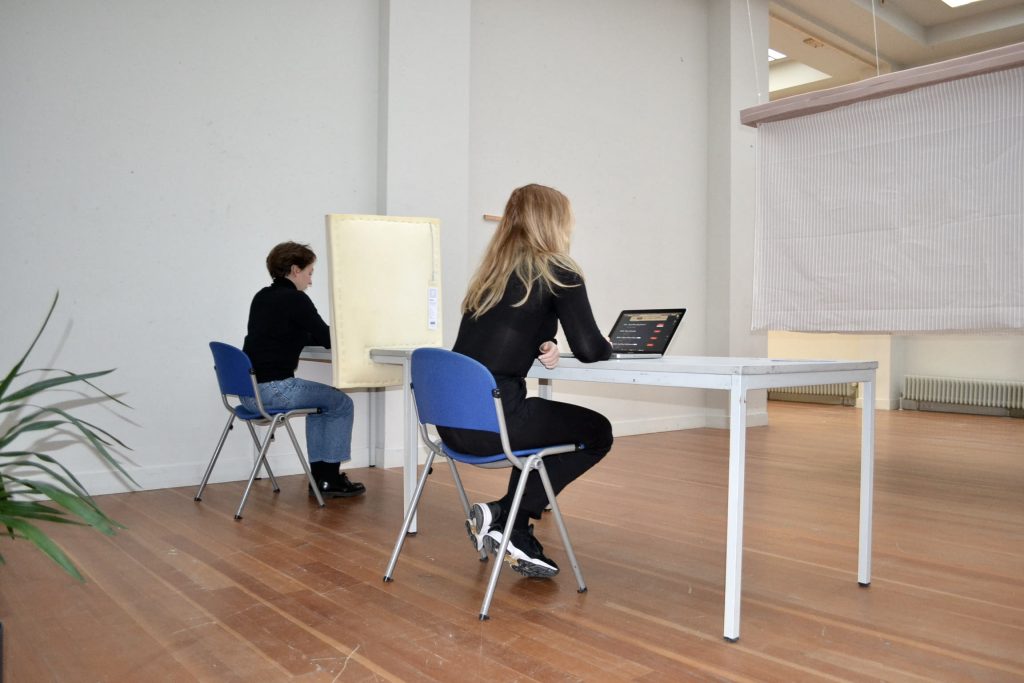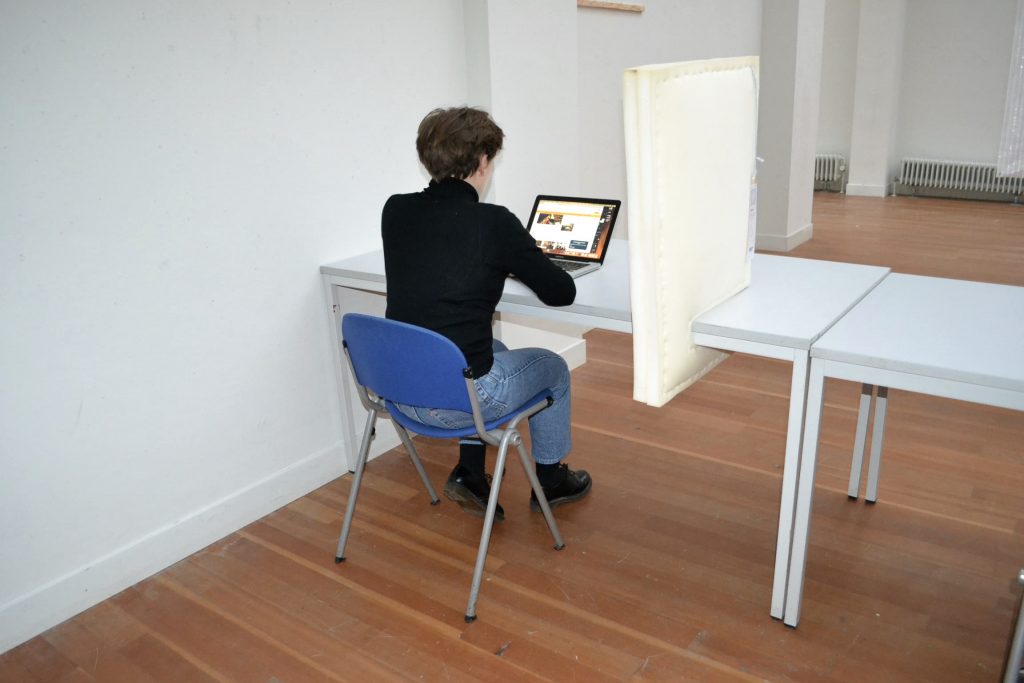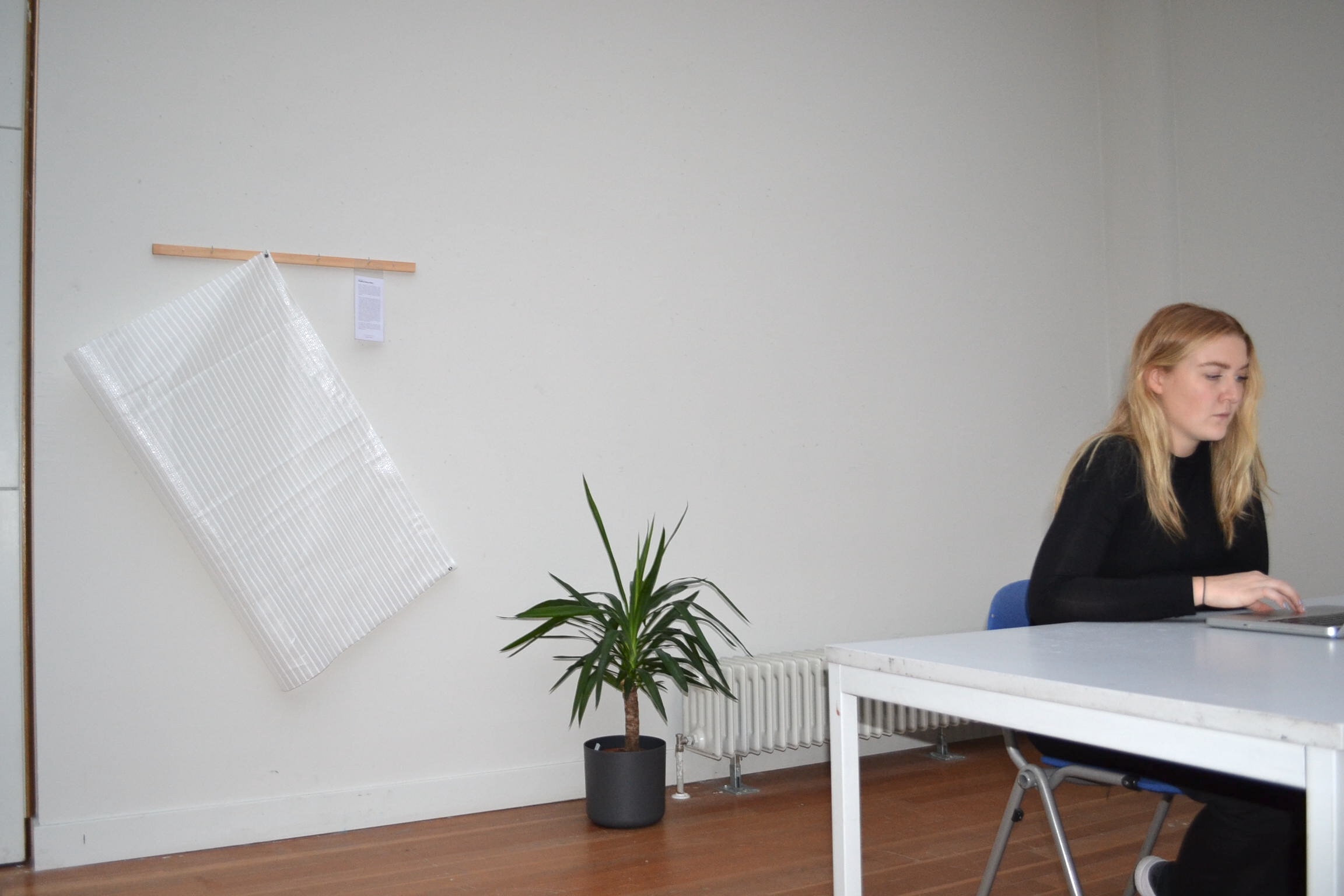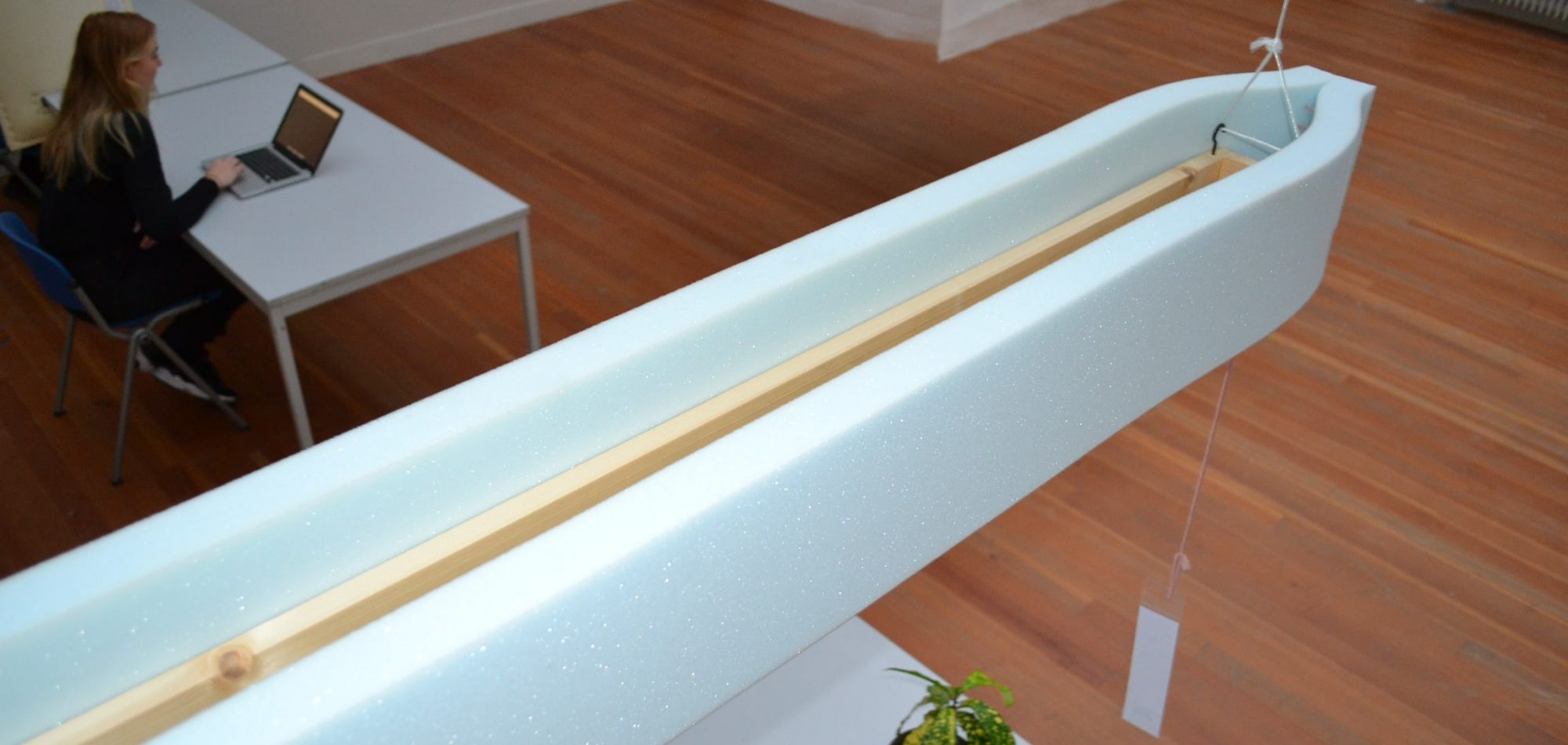
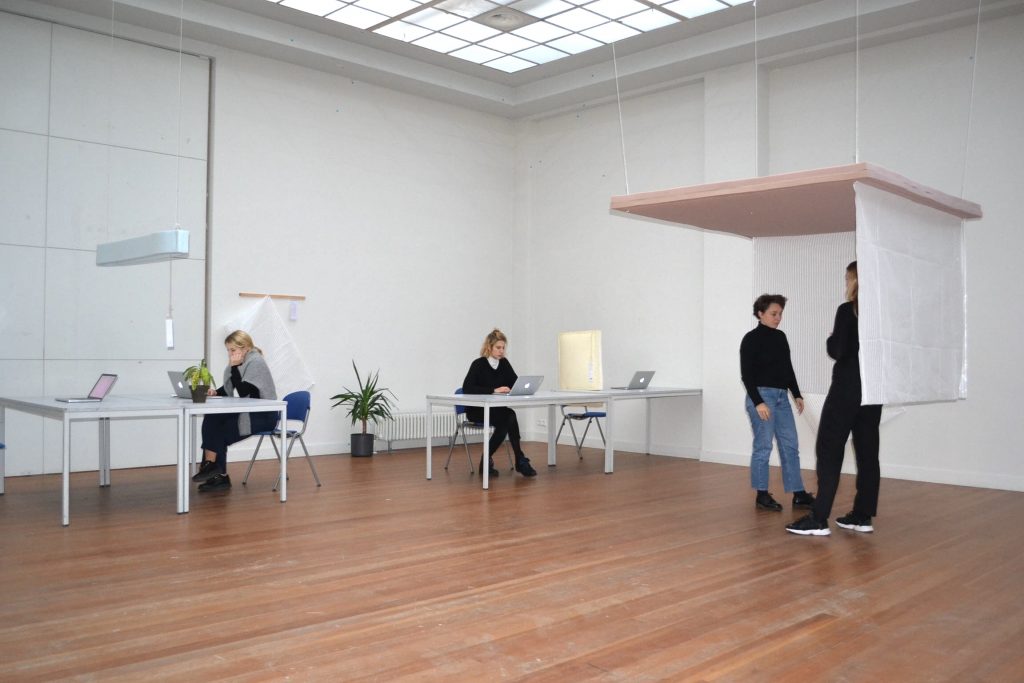
Cherishing Privacy
DISCIPLINE
STATUS
YEAR
Object Design / Research
Prototype
2019
“By adding a variety of objects into the social layer, a more dynamic office landscape will arise. A landscape in which people are able to personalise their own level of privacy. If someone wants to concentrate on their work without any distractions they can either let down a translucent sheet or add a foam panel in order to focus. If they want to reconnect with the workspace and its people, they can remove them again. The objects are made from foam to absorb high-pitched noises. The translucency of the sheets ensure visual privacy and block visual distraction.
The objects are designed in a way that they give people a feeling of comfort while working in an open-plan workspace. They can ensure privacy as well as enabling social interaction and communication.”
Manifesto
Open-plan workspaces are on the rise. It is claimed that they encourage social interaction and communication, promising productivity throughout the workspace. Although I personally think it is incredibly helpful to share your thoughts and ideas while working, I strongly believe that there is a flip-side to the constant exposure. Because open-plan workspaces are so open and flexible, new problems emerge such as visual distraction, noise pollution and a lack of privacy. This can ultimately lead to a general feeling of discomfort and result in a lack in concentration and productivity.
For me, a workspace can be divided in two. The functional and the social. The space from the floor to the desk is functional. The space from the desk to the (suspended) ceiling is the social. Then again, the ceiling is functional. The social layer is where both the positive and the negative linger in. We deal here with a delicate balance between the individuals and the connections between them. If social interaction flourishes, concentration decreases. If visual privacy increases, discomfort fades. It’s a constant push and pull that is in or out of balance with each other.
In order to create a more comfortable working atmosphere, we need to reintroduce different levels of privacy. Open. Half open. Closed. It’s crucial that this privacy is dynamic. Workspaces should be constantly changing into different forms to facilitate to the needs of the people using it. Enabling the possibility to personalise within the open-plan workspace will give people comfort and thereby improve their concentration and productivity. By breaking the office landscape in this way, I hope to emphasise the fact that with everyone being so focused on creating openness and flexibility, it wouldn’t hurt to cherish privacy a bit more.
